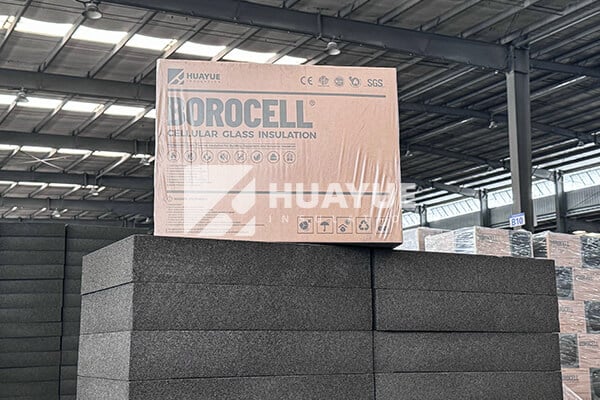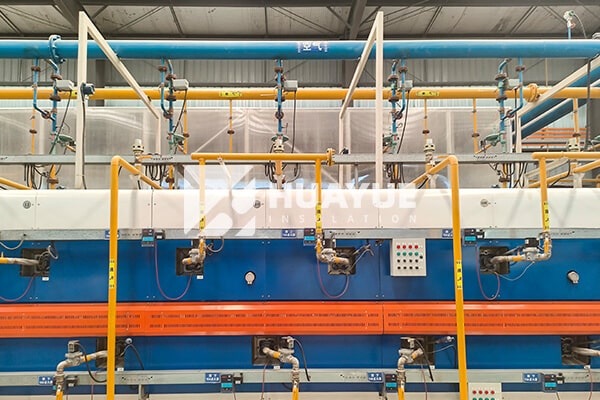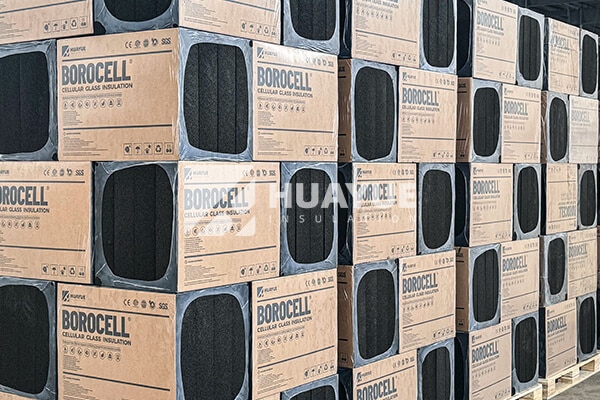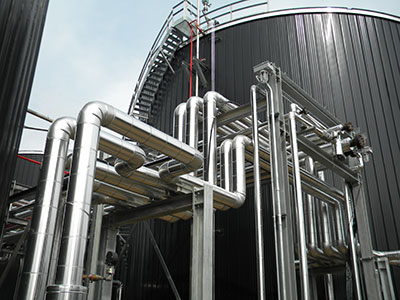Many engineers today are rethinking traditional insulation. Is it time to look for something more reliable than old solutions?
Cellular glass is a rigid insulation made from crushed glass fused with carbon, resulting in a closed-cell structure. It’s waterproof, non-combustible and resists chemical attack, making it ideal for critical insulation in harsh environments.

Old ideas about insulation fail to meet modern demands. Engineers need materials with longer lifespans and higher safety. Cellular glass stands out in heavy industry because it solves multiple problems. It prevents corrosion under insulation, stops water absorption, and has no organic binders that might degrade or burn. When I first used cellular glass on an industrial tank, the efficiency surprised me. It remained dry and solid under all sorts of bad weather. These real benefits, not just marketing claims, are what make cellular glass meaningful in my daily work.
Is cellular glass the same as fiberglass?
Many people confuse cellular glass and fiberglass because both have glass in their names. But the difference matters in engineering decisions.
Cellular glass is completely different from fiberglass. Cellular glass is made by melting crushed glass and mixing it with a foaming agent, creating a solid board of connected glass bubbles. Fiberglass is made by spinning glass into thin fibers and binding them with resins, creating a soft, fleecy material. Cellular glass does not absorb water, while fiberglass can take on moisture in wet conditions. Cellular glass is hard and strong. Fiberglass is softer and easier to squeeze. Cellular glass resists fire without burning or smoking, but fiberglass might burn if its resin is exposed to flame.

These differences affect how the materials work day-to-day. When I need insulation for outdoor pipes or tanks that might get wet, I use cellular glass because I know it won’t let water in or break down after years in harsh weather. When we tested cellular glass beside fiberglass during a rainstorm, the cellular glass stayed dry and solid, but the fiberglass took on water and lost much of its insulating ability. Understanding these direct differences always leads me to make better choices for my tanks and systems.
What is the purpose of cellular glass insulation?
Corrosion, leaks, and frequent repairs create headaches for plant managers. Finding the right insulation prevents these problems.
Cellular glass insulation is designed to block heat loss, stop water from getting in, and prevent the risk of fire. It’s used in tanks, pipes, and equipment where durability and low maintenance matter. My customers always demand insulation that won’t let water soak through. When I cover cryogenic storage tanks, cellular glass helps keep the temperature where I want it, without worry about leaks or corrosion. I use cellular glass on underground pipes when they need to be protected from soil chemicals and water. In chemical plants or storage areas, cellular glass keeps corrosion away because it doesn’t react with acids or alkalis. When I first saw how cellular glass performed at a coastal tank farm hit by ocean spray, I knew why it’s trusted all over the world. The insulation didn’t break down and never allowed moisture to sneak in, saving everyone the cost and trouble of constant repairs.
What is the R value of cellular glass?
Engineers need insulation with real, tested insulating power. R value is the number everyone asks about.
Cellular glass insulation usually has an R value of roughly 3.3 to 3.7 per inch. This isn’t as high as some advanced polyurethane foams, but it’s higher than many older mineral insulations. The real strength of cellular glass is how it keeps its R value in the field. Some insulations start out strong but lose most of their power once they absorb water. Cellular glass does not absorb water. I have checked old cellular glass panels that have been in use for many years. They still keep the same insulating power as when brand new. When storing chemicals at low temperatures, maintaining the R value makes a huge difference in energy costs. I always remind my team and customers that cellular glass delivers steady and reliable insulation, year after year, instead of only good results in the early days.

Is cellular glass insulation fireproof?
Fire risk is always on my mind. Are the materials we use fire-resistant?
Cellular glass insulation is fully fireproof. It does not catch fire, smoke, or produce harmful gas when exposed to heat or flames. Unlike some other insulations that can have binders or additives which burn, cellular glass is made completely from glass and a mineral foaming agent. Every fire test I have seen confirms that cellular glass just sits there during exposure, not burning at all. Many safety engineers and regulators trust cellular glass for critical tanks and pipes holding dangerous chemicals or fuel. When I showed fire managers how cellular glass handled a torch test, staying stable against direct flame, they quickly understood why so many plants use it as their first choice for insulation safety.
For customers who cannot afford any fire risk—chemical plants, storage tanks, sensitive equipment areas—cellular glass has always been my default recommendation.
Conclusion
Cellular glass insulation brings unmatched durability, water resistance, and fire safety to modern tanks and pipes.

